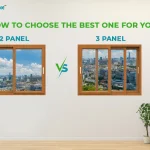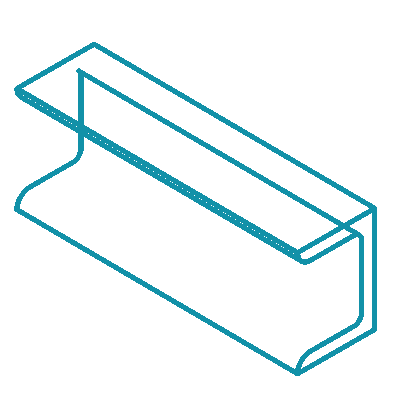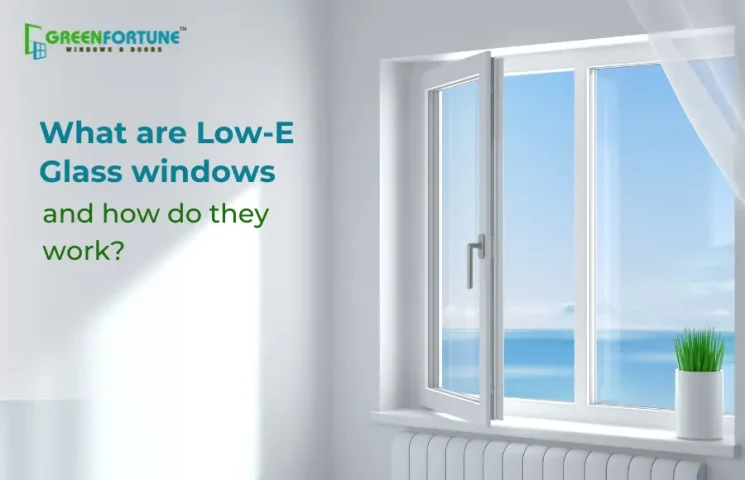
Understanding the difference between 2 track, 2.5 track and 3 track windows
October 15, 2024
How uPVC Combination Windows Can Help You Economise on Energy Bills?
October 15, 2024In the race to achieve energy efficiency and comfort, Low-E glass windows have emerged as the most sought-after choice for both homeowners and builders. But really, what are Low-E glass windows, and how do they work to enhance energy performance?
This blog explores the world of Low-E glass to show its benefits, technology, and the impact on home efficiency and comfort.
Table of contents
What is a Low-E Glass Window?
Low-E glass windows have a unique coating that is utilized for improving energy efficiency. "Low-E" actually stands for "low emissivity", referring to the ability of the glass to cut down on heat transfer while still allowing natural light through it. This coating is thus usually made from a small layer of metal oxide, which is applied onto the surface of the glass.
There are two major varieties of Low-E coatings:
Hard-Coat Low-E Glass: The coating in this case takes place when the glass is hot. At that point, it becomes a permanent part of the glass surface, hence durable but not scratch-resistant.
Soft-Coat Low-E Glass: It is also called sputtered Low-E glass. The coating is applied in a vacuum chamber, using a process known as sputtering. It is more reflective and superior in performance to hard-coat coatings. It is less durable.
How does Low-E window glass work?
The Low-E glass window works by controlling the rate of heat transfer through the glass. This is accomplished through the use of two primary mechanisms:
Low-E's Heat Reflectivity
The Low-E coating is designed to reflect heat back to its source. During cold weather, that means it reflects heat coming from inside your home back into the room, instead of allowing it to pass outside through the windows. Meanwhile, during times of hot weather, it reflects exterior heat away from the interior so that your home stays cool.
UV Radiation
Low-E glass also blocks off a significant amount of UV radiation from the sun. These UV rays cause the fading of furniture, carpets, and other interior furnishings. By reducing UV radiation exposure, the items are kept for a longer time with improved appearance by Low-E glass.
Advantages of Low-E Glass Windows
Improved energy efficiency: Low-E glass reduces heat loss, which maintains the indoor temperature within a reasonable comfort zone. This form of efficiency minimizes heating and cooling.
It can save money: This ultimately leads to significant savings on heating and cooling bills.
Improved Comfort: Low-E glass windows will add to comfort by maintaining interior temperatures. You are less likely to feel cold drafts along the windows on winter days or hot spots in summer.
Lesser Glare: The reflective glass properties in the Low-E glass can help reduce the glare from the sun inside. This makes them more comfortable and reduces eyestrain.
UV Protection: Lows-E glass protects against injurious radiation that may cause interior furnishings and artwork to fade. As a result, this feature prolongs the life and vibrancy of your home's interiors.
Environmental Impact: Low-E glass reduces the need to heat and cool, thereby reducing energy consumption that lowers your carbon footprint.
Low-E glass types and their applications
Several variations of Low-E glass exist that work better in different types of climates and applications:
Passive Low-E Glass: Designed for colder climates, passive Low-E glass is manufactured to maximize solar heat gain to warm up the interior of a building. It allows sunlight in but retains the heat of the room inside, ideal in locations where there are very lengthy and cold winters.
Solar Control Low-E Glass: Such a glass is designed for those climates where cooling considerations are paramount. It will reflect a large portion of heating from the sun and minimize heat gain accordingly, hence being used in hot summer regions.
Dual Low-E Glass: With both passive and solar control properties, dual Low-E glass is versatile and can take full advantage of most climates. It balances heat gain and loss to optimize comfort year-round.
Installation and Maintenance
Low-E glass windows are installed like regular windows but with even greater detail to prevent the coating from distorting its effectiveness. Proper sealing and framing are crucial in maintaining the performance of the glass.
Low-E glass does not pose any problem in its maintenance. Regular cleaning should be done with non-abrasive, mild cleaners. Harsh chemicals or scrubbing tools ruin the coating.
Conclusion
Low-E glass windows mark a tremendous leap into improving window technologies with respect to energy efficiency, comfort, and minimizing UV radiation.
Knowing how Low-E glass works and its benefits will better prepare you for making an informed decision in incorporating such technology into your homes, whether it's needed for reduced energy costs, improved comfort, or protection for interior furnishings.
Low-E glass window installation provides a worthy investment that meets today's needs for sustainability and home improvements. Detailed information or advice on choosing the right Low-E glass window for the house could be sought from a professional window installer who can recommend the best option according to individual needs and specific climate.
Discover GreenFortune, Your Partner in Quality uPVC Windows and Doors
At GreenFortune, we are proud to offer high-quality uPVC windows and doors at affordable prices. We offer and install a variety of window types for all homes with both durability and aesthetics in mind.
Contact us to find out more about the uPVC window design that we offer. Whether you are renovating your existing home or building a new one, partner with us to elevate the comfort levels and energy efficiency in addition to the style quotient of your space provided by our superior-quality uPVC windows.







